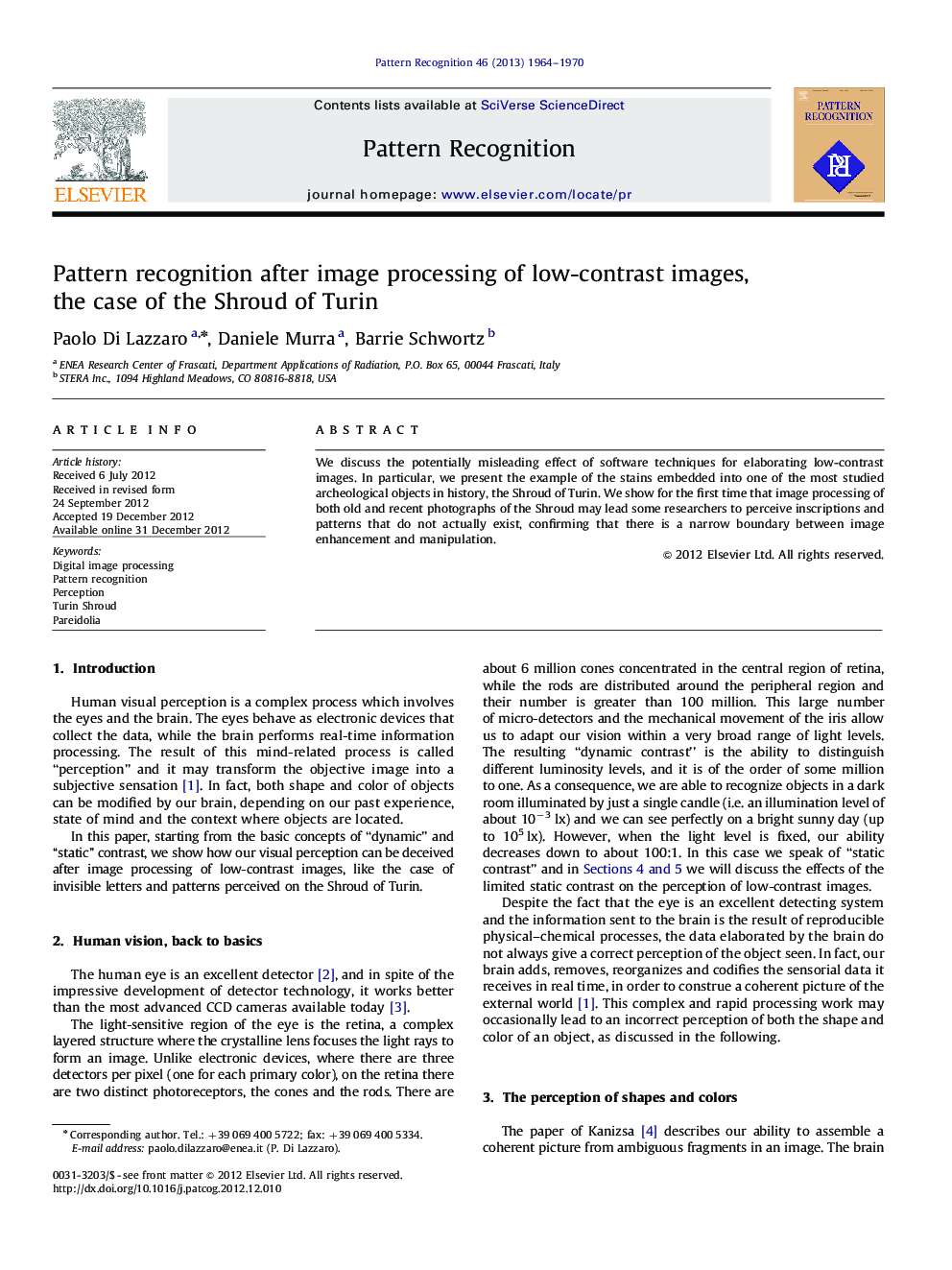| Article ID | Journal | Published Year | Pages | File Type |
|---|---|---|---|---|
| 530554 | Pattern Recognition | 1970 | 7 Pages |
We discuss the potentially misleading effect of software techniques for elaborating low-contrast images. In particular, we present the example of the stains embedded into one of the most studied archeological objects in history, the Shroud of Turin. We show for the first time that image processing of both old and recent photographs of the Shroud may lead some researchers to perceive inscriptions and patterns that do not actually exist, confirming that there is a narrow boundary between image enhancement and manipulation.
► The limited static contrast of our eyes may render problematic the perception of low-contrast images. ► Brain’s ability to retrieve incomplete information interpret false image pixels after image processing. ► Image processing of Shroud photographs leads to perceive patterns that do not actually exist. ► There is a narrow line between enhancement and manipulation of low-contrast images.
